A few years ago I drove a Ram Rebel 1500 from California to Tuktoyaktuk, a small Inuit settlement on the frozen shores of the Arctic Ocean. For three weeks I relished the sweet timbre of the 5.7-liter Hemi as I navigated 7,000 miles of snow-covered pavement, the desolate Dempster Highway, and the famous Mackenzie River ice road.
With heated seats and steering wheel (nice when it’s -20°F), solid handling and a phenomenal ABS system (60 to zero, no-hands-on-the-wheel, dead-straight full-brake stops… on the ice), I hoped the brand would never change this platform.
I recently joined Ram Trucks in Texas for the launch of the refreshed fifth-generation 1500, and just about fell out of my boots when I cracked the hood and read Twin Turbo on the engine cover.
Did Ram turbo the Hemi? Not the case, my V8-loving friends. We’ll get into a host of other upgrades, but the big news is that 2025 marks the end of a multi-decade run for the Hemi-powered 1500. The question is: Have they buggered things up?
Eye of the Hurricane
In its place will be a version of the 3.0-liter Hurricane I6 SST (Straight Six Turbo) introduced with Jeep’s Wagoneer and Grand Wagoneer. Scoff we might, but this pint-sized mill outproduces the 5.7 by a stretch, churning out 420 horsepower and 469 lb-ft of torque versus the Hemi’s 395 and 410, respectively. But curious minds want to know how they did it.
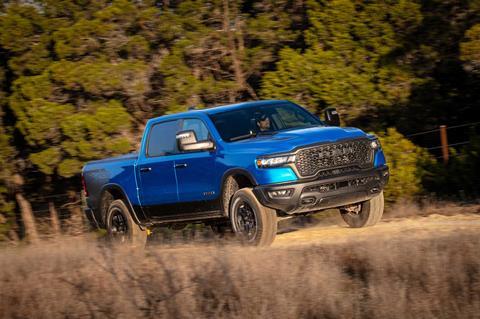
Tapping the latest in technology and engineering practices, they started with a forged crank and connecting rods, which are mated to cast 10.4:1 compression cast-aluminum pistons wrapped with DLC (diamond-like carbon) coated rings.
Main bearing caps are cross-bolted (vertically and laterally) to a deep-skirt cast-aluminum block, and cylinders are plasma spray-bored to minimize friction.
An aluminum head supports hydro-formed tubular cams that independently manage four valves per cylinder. Aspiration is via twin turbos and a common-rail direct-injection system primed by a high-pressure pump that generates up to 5,075 psi (350 bar). Output numbers are impressive, but more impressive is its smooth and balanced run-up from idle to the 5,800 rpm redline.
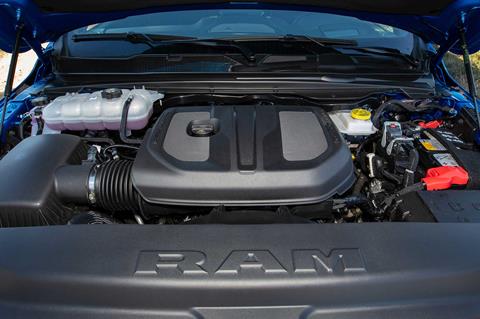
For those who like to push the adrenaline envelope, the optional HO variant (Longhorn, Limited, and Tungsten models only) generates a G-inducing 540 ponies and 521 lb-ft of torque.
Both powerplants are backed by the venerable TorqueFlite 850RE eight-speed automatic and Borg-Warner transfer case, which offers on-demand or full-time four-wheel drive depending on model.
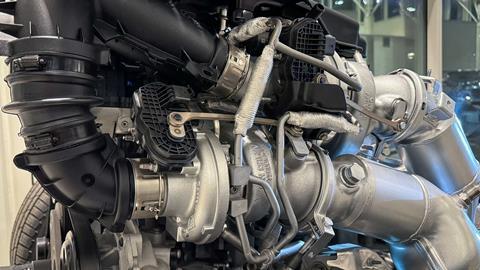
An electronic locker is standard on Rebel and available on all models, and all I6 versions employ 3.92:1 gearing. The Pentastar 3.6-liter V6 eTorque mild hybrid is the baseline engine, and while I’m a fan of the Pentastar, if I’m buying a full-size truck I’d opt for the performance and grunt of the more powerful mill.
Tech, Interior & Toys
Being a blue-collar guy at heart, I started the weekend in a Tradesman, moved to the luxurious Tungsten, and ended up in my happy place off-piste in the Rebel. The Tradesman is a work truck and appointed accordingly, but the Tungsten and Limited up the ante when it comes to luxury and technology.
Premium models include a 14.5-inch high-resolution Uconnect 5 command center with multi-screen capability. A new 10.25-inch passenger-side LCD allows the co-pilot to manage navigation, entertainment, and to monitor exterior cameras.
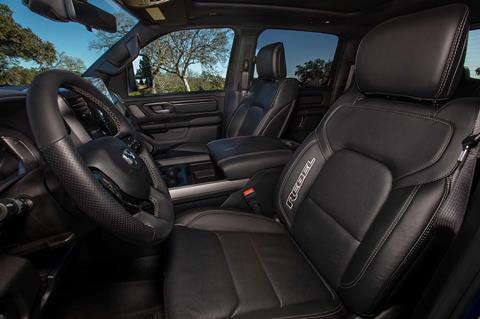
The instrument cluster has also been enlarged to 12.3 inches, and steering wheel thumb controls allow you to toggle through a dozen screen options. All are interconnected via an advanced Atlantis electrical architecture, which boasts higher operating speeds and enhanced memory capacity.
At the front of the console is a dual-station wireless phone charger, and a heads-up display on the windscreen offers five data zones. If you want to rupture an ear drum, crank up the bazillion-watt (1,228 in fact) 23-speaker Klipsch audio system. Add 24-position adjustable seats, back massager, power lumbar support, hand-stitched leather and multi-zone climate control, and you’re all set for a trailside nap.
Although we take cutting-edge safety features for granted, Ram is introducing more advanced autonomous driving systems: Active Driving Assist and Hands-free Driving Assist (Level 2). On select sections of highway it utilizes radar, 360-degree cameras and lane-centering to literally drive itself.
But if you reach back to swat your rug rats, the annoying drowsy driver alarm will bring your attention back to the road. Fun fact. I trust a computer to land a 747 at night in low-viz conditions, but taking control of my vehicle on a highway filled with knuckleheads? No thanks. Besides, I actually like the “driving” part of driving.
The 1.8-kW inverter makes charging devices or running power tools a breeze. I also like the fold-back rear seat, which provides flat, door-to-door storage. Optional Ram Boxes on the bed rails are great for stashing tools or fishing gear, but I’d wager they could also hold a case of coldies. Lastly is the multi-function tailgate. It opens like a standard gate or ambulance style, features power open and close, and has key fob remote operation.
Road & Trail
With plenty of seat time in the Rebel, we are well familiar with its dirt performance. It’s not a rock crawler, but does admirably well for a full-size truck. In my opinion, its happy place is Baja-style high-speed desert roads.
Multiple drive modes, a nimble suspension, and rear e-locker remain intact, and the camera system allows you to view oncoming obstacles when they disappear under the end of the hood. In short, it retains the off-road capability we’ve come to appreciate from the Rebel.
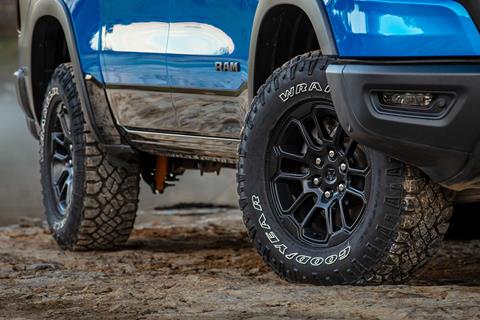
The most notable change from the Hemi is the Hurricane’s quieter notes and smoother transition through the power curve. Interestingly, with the sunset of the TRX and its fire-breathing 702-hp Hellcat mill, the Rebel steps in as the brand’s primary dirt offering. But rumor has it that Ram will be releasing the RHO in 2025 (Rebel High Output?), which is said to be incorporating the TRX’s suspension.
The Hurricane 3.0 is no slouch on the tarmac, pulling off the line with purpose when you squeeze the skinny pedal. On twisting two-lane roads, the 1500 displayed predictable tracking and reasonable body roll during aggressive constant-radius turns, an example of well-balanced front and rear damping. I’d rate yaw damping at 0.5—how quickly the vehicle returns to a neutral position during emergency lane-change scenarios—settling after one full cycle.
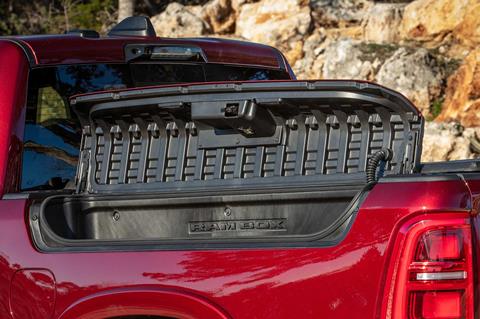
The Tungsten, with its low-profile tires and stance, excelled over the Rebel in this setting, but both are simply fun to drive. Turbo lag is almost a thing of the past, and the Hurricane will spin the speedo well past the legal limit at a nearly linear rate.
We hooked up a 6,200-pound Airstream trailer to a Limited for a drive through a mix of country roads and 60-mph highway. Towing capacities range from 8,100 pounds (Pentastar) to 11,560 pounds with the standard 3.0 Hurricane (the HO drops to 10,740 pounds).
My personal tow rig is a ’99 Dodge Ram 2500 with a Cummins 5.9-liter. I love that truck and am chagrined to say the Hurricane-powered 1500 would leave my old 24-valve in the rearview mirror.
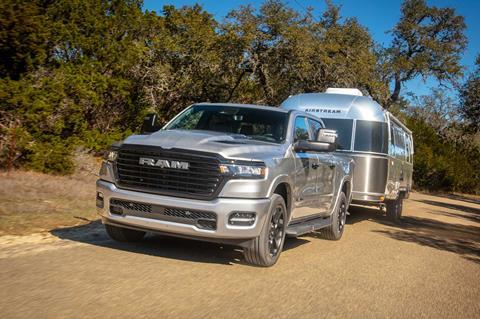
Whether braking hard, carving turns or accelerating, I could definitely feel the load, but never was the tail wagging the dog. Although I don’t have issues backing up or navigating tight corners (I spent a decade driving a truck for UPS), the Auto Hitch Assist, which guides the receiver to the ball, is super handy.
And when you activate a turn signal the rear side camera view is displayed on the center LCD. A 26-gallon fuel cell is standard, but the optional 33-gallon unit will extend your range by 125 miles (or so) on the highway—EPA fuel economy estimates are forthcoming.
Department of Complaints
Our world of 18- and 20-inch wheels drives me nuts. Although they (and their low-profile tires) reduce road noise and rolling resistance, enhance fuel economy, and are great in most conditions, when in soft mud, snow or sand there is no substitute for airing down and increasing the tire’s footprint.
On the flip side, big-wheel packages accommodate massive 14.9-inch twin-piston disc brakes, one of the many factors that contribute to the 1500’s solid road manners and towing stability.
Another beef is the lack of a console shifter… and manual cogs. Call me old-school, but a truck with the sportiness of the Rebel deserves a proper shifter. A few other grievances include the HO requiring 91-octane fuel, and there’s no replacing the guttural tone of a good ’ol Hemi (RIP).
What’s Next?
In addition to the RHO, 2025 will reveal the first fully electric 1500, the REV, along with the extended-range Ramcharger, in which a Pentastar 3.6-liter gas mill will generate juice to power a pair of electric drive motors. Interestingly, a form of this technology has been around for more than a century, but is predominantly used by railroads. Maybe I’ll borrow one for my next trek to the Arctic, but I have no doubt I’m going to miss the sweet rumble of a Hemi under the hood.
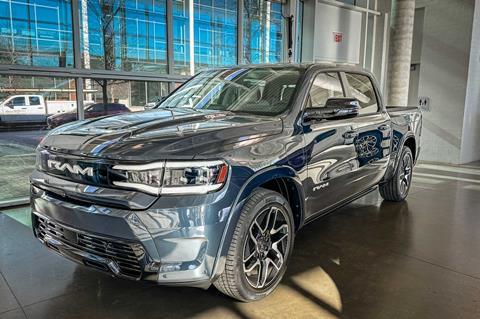
Powertrains by the Numbers
| Horsepower | Torque | Payload | Towing | |
|---|---|---|---|---|
|
Pentastar 3.6-liter eTorque V6 |
305 |
269 lb.-ft. |
2,300 lbs. |
8,100 lbs. |
|
Hurricane twin-turbo 3.0-liter I6 |
420 |
469 lb.-ft. |
1,910 lbs. |
11,560 lbs. |
|
Hurricane HO |
540 |
521 lb.-ft. |
1,370 lbs. |
10,740 lbs. |
This article originally appeared in OVR Issue 09. For more informative articles like this, consider subscribing to OVR Magazine in print or digital versions here. You can also find the print edition of OVR at your local newsstand by using our Magazine Finder.





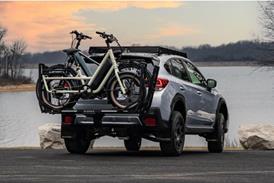

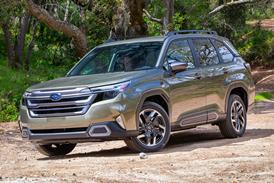






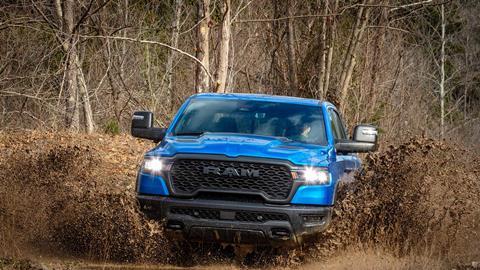
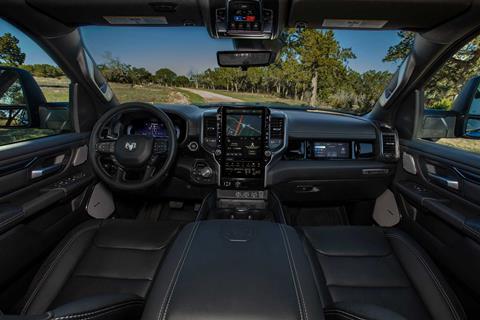
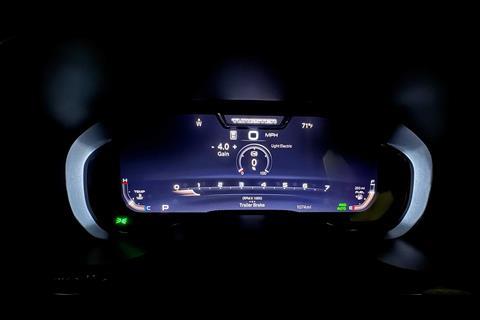
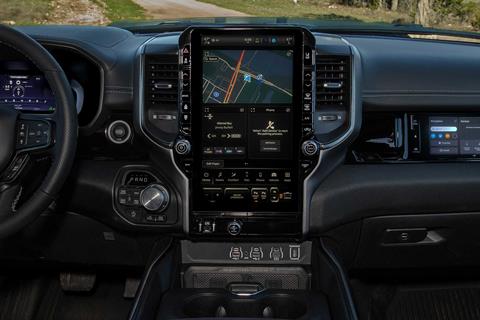
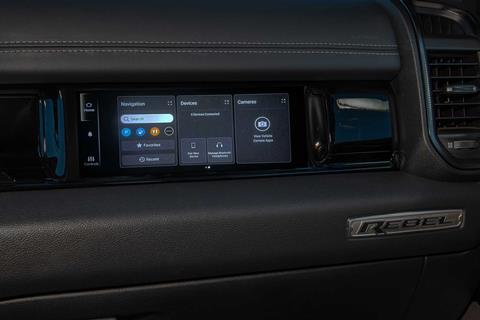

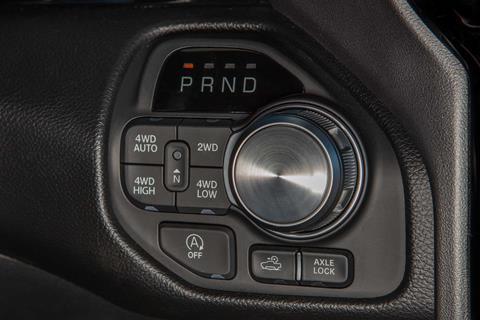
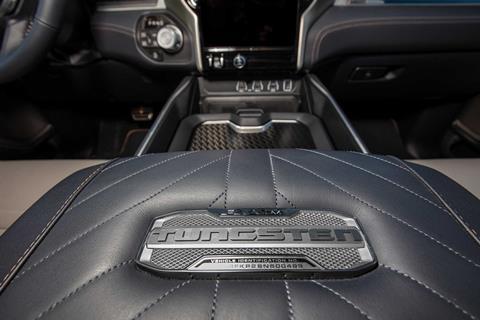
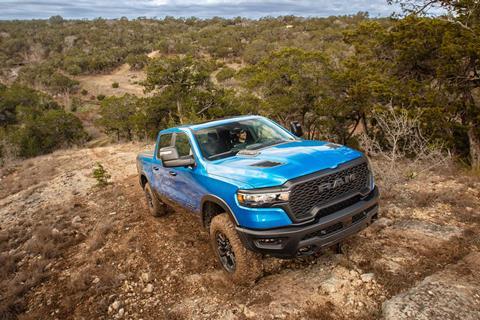
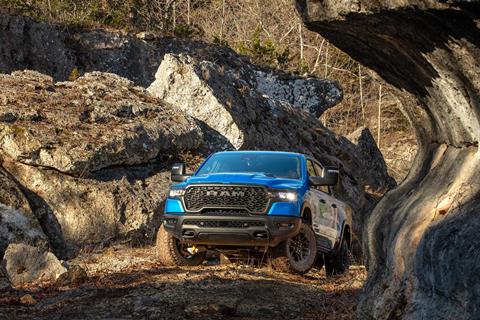
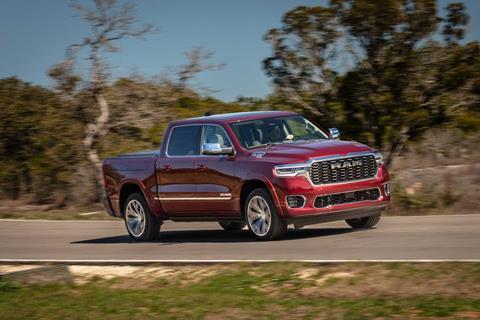

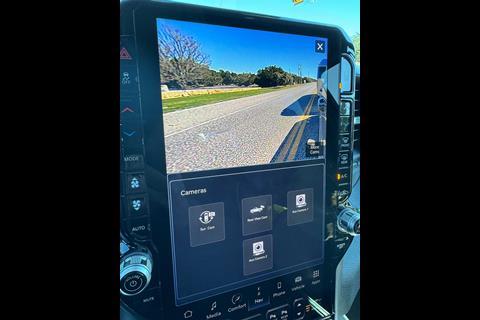






No comments yet